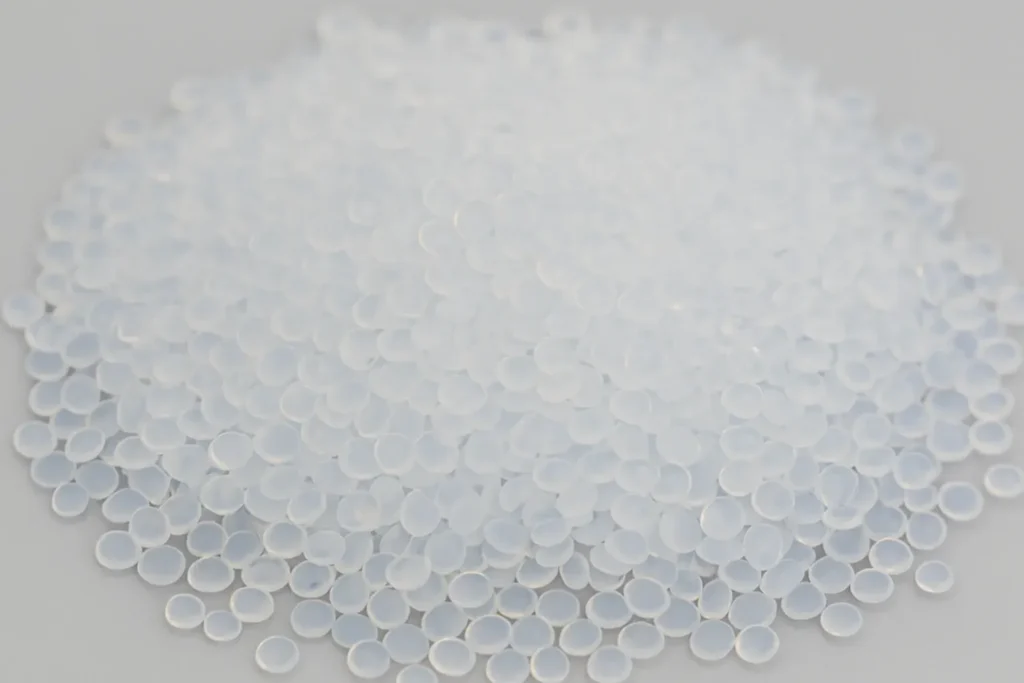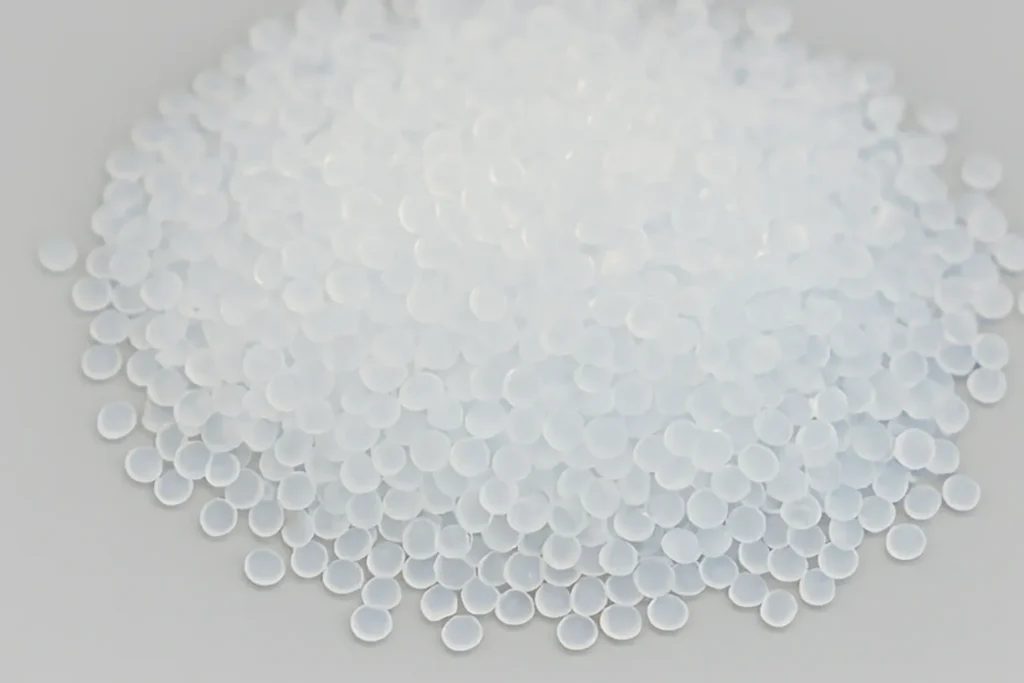Introduction PTFE vs. FEP vs. PFA
PTFE, FEP, and PFA are three of the most widely used fluoropolymers, each offering a unique set of properties derived from their distinct chemical structures. While all three provide excellent chemical resistance and high-temperature performance, understanding their differences is crucial for selecting the optimal material for a specific application. This article provides a comparative analysis to help engineers and buyers make informed decisions.
Core Properties Comparison
PTFE (Polytetrafluoroethylene)
- Chemical Resistance: Unmatched – virtually inert to all chemicals.
- Temperature Range: Broad, from -200°C to +260°C.
- Processing: Cannot be melt-processed; typically compression molded or skived. Requires CNC machining for custom parts.
- Transparency: Opaque (unless expanded).
- Friction: Extremely low coefficient of friction.
- Mechanical Properties: Low tensile strength, can creep under load.

fep resin
FEP (Fluorinated Ethylene Propylene)
- Chemical Resistance: Excellent, nearly as good as PTFE.
- Temperature Range: Up to approximately 200°C.
- Processing: Melt-processable – can be extruded, injection molded, thermoformed.
- Transparency: Fully transparent.
- Friction: Low friction, slightly higher than PTFE.
- Mechanical Properties: Better than PTFE, can be welded.

pfa resin
PFA (Perfluoroalkoxy Alkane)
- Chemical Resistance: Excellent, equivalent to PTFE.
- Temperature Range: Highest among melt-processable fluoropolymers, up to approximately 260°C.
- Processing: Melt-processable – extrusion, injection molding, blow molding.
- Transparency: Fully transparent.
- Friction: Low friction, similar to FEP.
- Mechanical Properties: Superior to PTFE and FEP, better toughness.
Key Decision Factors PTFE vs. FEP vs. PFA
When to Choose PTFE
- Ultimate Chemical Inertness: Required for the most aggressive chemicals.
- Lowest Friction: Essential for non-stick or low-wear applications.
- Electrical Insulation: Superior dielectric properties needed.
- Wide Temperature Range: Operation across extreme temperatures.
- Cost Sensitivity: For simple parts where high mechanical strength isn’t needed.
When to Choose FEP
- Transparency: Visual monitoring is required.
- Melt-Processability: Need for easy extrusion, injection molding, or thermoforming.
- Weldability: Fabrication of large or complex lined structures.
- Moderate Temperature: Applications up to 200°C with good chemical resistance.
- Electrical Applications: Where transparency and good dielectric properties are needed.
When to Choose PFA
- Highest Temperature Performance: Continuous use at temperatures up to 260°C.
- High Purity: Critical for semiconductor or pharmaceutical applications.
- Melt-Processability + Performance: Complex shapes needed with PTFE-level performance.
- Mechanical Strength: Better toughness and strength compared to PTFE.
- Transparency: Required along with high-temperature chemical resistance.
Typical Applications by Material
PTFE Applications
- Chemical processing valve seats and gaskets
- Non-stick cookware coatings
- High-frequency electrical insulators
- Seals for static applications
- Laboratory ware (beakers, funnels)
FEP Applications
- Transparent chemical tubing
- Wire and cable jacketing
- Food processing equipment linings
- Chemical storage tank linings
- Release films for manufacturing
PFA Applications
- Semiconductor chemical delivery systems
- High-purity pharmaceutical components
- Chemical reactor linings at high temperatures
- High-temperature electrical connectors
- Ultra-clean fluid transfer systems
Quality and Compliance Considerations
- All Materials: ISO 9001 certified manufacturing processes.
- Food & Pharma: FDA and USP Class VI compliant grades available.
- Electrical: UL 94 V-0 ratings achievable.
- Traceability: Full material traceability with CoC and MSDS.

PFA Resin and Semi-Finished Products for Demanding Applications
Conclusion PTFE vs. FEP vs. PFA
Selecting between PTFE, FEP, and PFA depends on the specific demands of your application. PTFE remains the gold standard for chemical inertness and low friction but lacks melt-processability. FEP offers excellent transparency and ease of processing for moderate-temperature applications. PFA provides the best combination of high-temperature performance, chemical resistance, and processability, making it ideal for the most demanding applications. Xiflon supplies all three materials in various forms – from resin to semi-finished products (rods, tubes, sheets) and custom machined or molded parts – ensuring you can access the right fluoropolymer for your needs. Our technical expertise helps guide you to the optimal choice based on performance, processability, and compliance requirements. Contact us for assistance in selecting the best fluoropolymer for your project.







